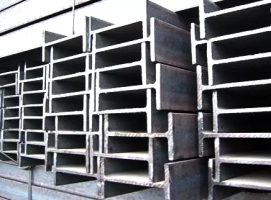The Essential Guide to Flange Measuring Tools and Sheet Metal Flange Tools
When it comes to working with sheet metal, precision and accuracy are non-negotiable. From HVAC ductwork to automotive body panels and custom fabrication, the quality of a finished product depends heavily on the accuracy of every bend, cut, and joint. One of the most crucial components in sheet metal fabrication is the flange—and the tools used to measure and create it are just as critical.

In this guide, we’ll explore what a flange measuring tool is, how it works, and why a sheet metal flange tool is indispensable in modern fabrication workshops.
What Is a Flange and Why Does It Matter?
Before diving into the tools, it’s helpful to understand what a flange is. A flange in sheet metal is a flat rim or collar that is bent at a specific angle—usually 90 degrees—along the edge of a part. These flanges serve various purposes: they reinforce edges, provide a surface for fastening, and help join parts together.
In industries like HVAC, aerospace, automotive, and industrial manufacturing, flanges are crucial for structural integrity and seamless assembly. But no matter how advanced your machinery is, if your flange isn’t measured or formed correctly, you risk misalignment, weak joints, and costly rework.
The Role of a Flange Measuring Tool
A flange measuring tool is a specialized instrument designed to measure the height, angle, and position of flanges on sheet metal parts. These tools are critical during quality control inspections and in production environments where tight tolerances are required.
Key Features:
- Angle Gauge: Ensures the flange is bent to the correct angle, typically 90°, though custom angles are often used in complex assemblies.
- Height Measurement: Measures the vertical distance of the flange from the base material.
- Digital or Manual Readouts: Digital tools provide higher precision, while manual tools are cost-effective and reliable in rugged environments.
Why Use a Flange Measuring Tool?
- Quality Assurance: Ensures parts meet specifications before they move to the next stage of production.
- Time-Saving: Reduces the need for trial-and-error during assembly.
- Error Reduction: Identifies issues early, preventing expensive mistakes down the line.
Whether you’re dealing with mass production or custom prototyping, using a flange measuring tool helps maintain consistent quality across all your parts.
Sheet Metal Flange Tools: Forming the Backbone of Fabrication
While a flange measuring tool helps you verify dimensions, a sheet metal flange tool is what actually creates the flange. These tools come in various forms depending on the complexity of the job and the scale of production.
Types of Sheet Metal Flange Tools:
- Hand Flanging Tools: Ideal for small-scale or on-site work. These handheld tools are perfect for quick flanges or touch-ups.
- Bench-Mounted Flanging Machines: Suitable for repetitive work. These offer greater precision and leverage, allowing consistent flange heights and angles.
- Hydraulic or Pneumatic Flange Machines: Used in industrial settings for high-volume production. These machines can automate the flanging process, significantly improving speed and accuracy.
Benefits of Using a Sheet Metal Flange Tool:
- Consistent Results: Ensures every flange is formed identically, which is critical for parts that must fit together perfectly.
- Reduced Labor Fatigue: Especially with powered tools, the workload on technicians is significantly reduced.
- Improved Productivity: Speeds up production without compromising quality.
In a world where downtime can cost thousands of dollars, having the right sheet metal flange tool in your workshop is not just an advantage—it’s a necessity.
Tips for Choosing the Right Tools
Choosing the right flange measuring tool and sheet metal flange tool depends on your application, material type, and production volume. Here are a few tips:
- Material Type: Softer metals like aluminum may not require heavy-duty tools, while stainless steel may need more robust equipment.
- Volume of Work: For occasional repairs or prototypes, manual tools may suffice. For high-volume production, invest in automated or pneumatic tools.
- Tolerance Requirements: The tighter the tolerance, the more precise your measuring tool needs to be.
Conclusion
In the sheet metal industry, precision is everything. A flange measuring tool ensures your flanges are accurate, while a sheet metal flange tool allows you to form them consistently. Together, these tools help reduce waste, improve efficiency, and ensure your parts meet rigorous quality standards.
Whether you’re a DIY enthusiast working on a restoration project or a professional fabricator in a high-volume shop, investing in the right flange tools will pay off in time saved, rework avoided, and customers satisfied.
Need help selecting the right flange measuring or sheet metal flange tool for your application? Reach out to a trusted supplier or fabrication expert to get started on the right path. Your workshop—and your results—will thank you.











